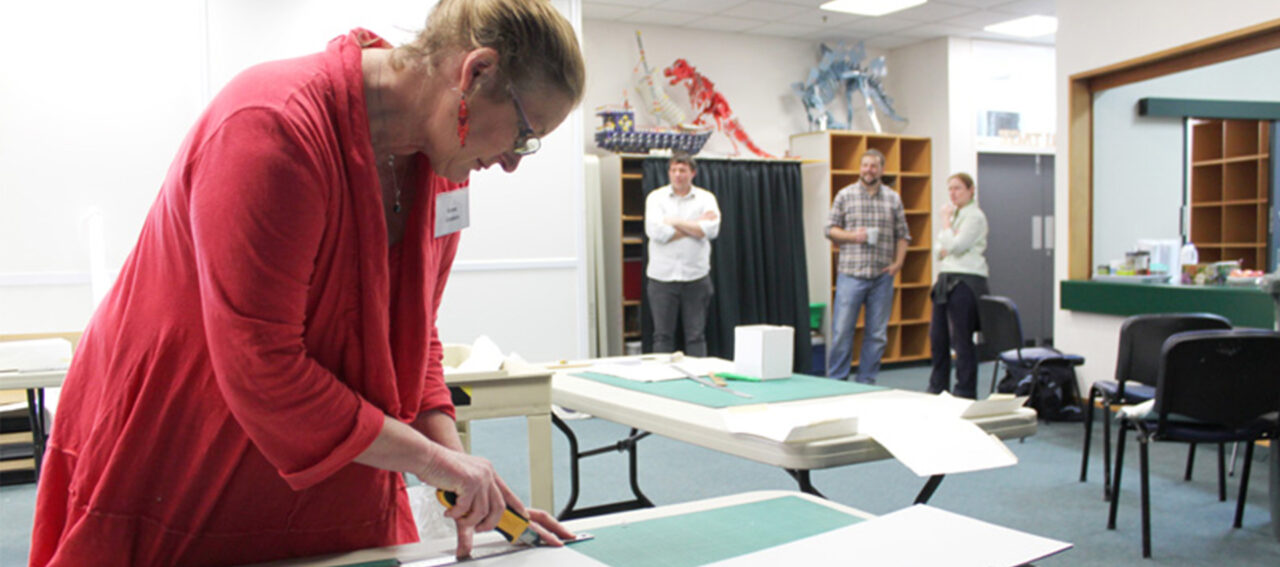Contrary to what they may tell you, the people who look after all the precious items in museum collections do not spring fully formed from Zeus’ forehead. They must be trained. In the Heritage Room at Te Manawa, the next generation of Massey University’s up-and-coming museum specialists learn the finer points of ceramics storage.
Exhibitions technician Bis Beatson presents the students with a large number of items in temporary packaging. Their task is to encased each one in foam and boxed it up.
“We show them the different styles of boxes and nesting for the ceramics we have,” Bis says, and notes that there’s no one way of approaching nest-making for each kind of piece. “It depends on the ceramic itself, how fragile or sturdy it is, how much space there is in the store and the dimensions of the piece itself.”
Sarah Hatton, from the Portrait Gallery in Wellington, is tackling a group of four varied pieces. One is almost spherical.
“This one’s been giving me a bit of grief. The other ones weren’t so bad, but this one is very deep.”
That means there’s not going to be a lot of foam between the fragile ceramic and the box.

Trimming the foam with a knife, Sarah’s had the piece in and out of the box ten times; with each try she gets closer to the perfect fit.
Anne Ginders works at Auckland Museum. She and Bis are discussing how best to create a box that both houses and presents a teapot.
“This is a box where the teapot will remain static throughout the whole opening process,” explains Anne. Her spatial visualisation is tested as well as her knife skills. Has she cut off something she didn’t want to? A discussion with Bis reveals it’s OK; in fact there’s more that could be pared away, keeping the solution simple.
At the end of the day the newly housed pieces will go into their crates and be stored safely in the ceramics room in the Art Gallery. An exhibition with their name on awaits sometime in the future, and these students have helped make it happen.




